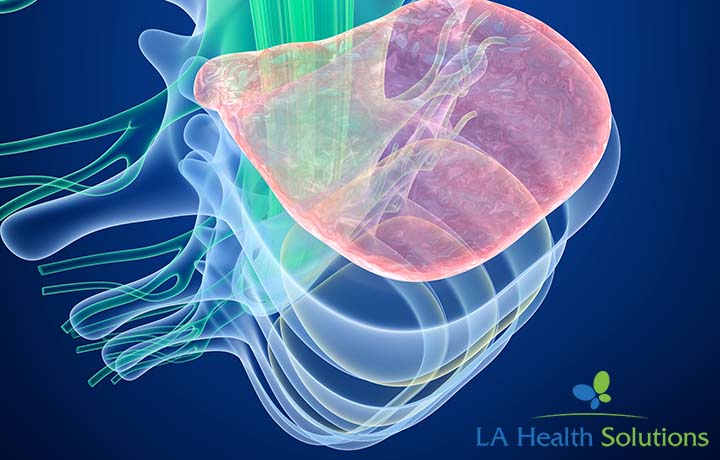Overview
During this minimally invasive procedure, the surgeon replaces a damaged disc in the lumbar spine with an expandable implant. The surgeon also implants hardware to stabilize the spine. This procedure relieves nerve root compression, which is a common cause of pain in the back and legs.
Preparation
In preparation for the procedure, anesthesia is administered. The patient is positioned face down. The surgeon uses a fluoroscope (a type of x-ray device that shows moving images) to identify the damaged disc.
Accessing the Disc
Using the fluoroscope for guidance, the surgeon inserts a needle into the back and carefully passes it through a natural opening in the spine called a foramen. This approach reduces tissue damage and preserves bone. The surgeon pushes the needle into the target disc. A guide wire is passed through the needle, and the needle is removed. The guide wire is used to direct a dilator and then a metal tube into the disc, creating a larger opening. The wire and dilator are removed, providing a working channel for the surgeon’s instruments.
Removing the Disc
The surgeon scrapes away the damaged inner disc material with a variety of instruments. The debris is removed and an endoscope is inserted to evaluate the disc space. The disc wall remains intact to help
contain the implant.
Inserting the Bone Graft
The surgeon uses dilators and larger tubes to gradually increase the height of the disc space. The entire disc space is filled with bone graft material.
Inserting the Disc Implant
The surgeon measures the disc space and selects the proper implant. The implant is expanded to press against the adjoining vertebrae. In some
cases, more than one implant is used.
Stabilizing the Spine
To complete the procedure, the surgeon implants additional hardware to stabilize the spine. Over time, the bone graft will grow through and around
the implants. The new bone will connect the vertebral bodies above and below the treated disc level. This solid bone connection is called an
interbody fusion.
Procedure Benefits
Patients can benefit from endoscopic surgery in many ways. A minimally invasive approach reduces time in the operating room and minimizes blood
loss and tissue damage. It helps minimize pain during healing. It also speeds recovery time and reduces the chance for complications.

At LA Health Solutions, we pride ourselves on our multi-disciplinary facility that offers a variety of comprehensive services including interventional pain management, physical therapy and chiropractic work. Many problems that we see in our patients can be treated with the right mix of non-surgical approaches, you do not have to have surgery first to see results. Call us today and schedule an appointment 844-496-LAHS (5247).

